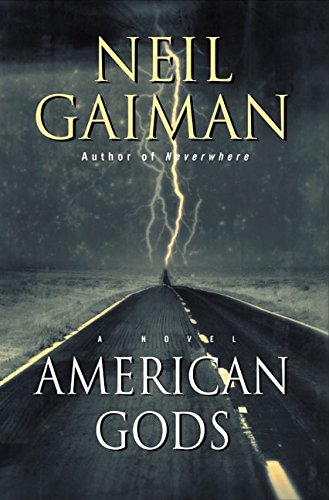I’m not the biggest Neil Gaiman fan, as I suspect some people are. I like his work. I wasn’t terribly impressed with the television version of Neverwhere, which I believe was my first introduction to his work, but I had always heard great things about Sandman and was not disappointed when I finally got my hand on the Sandman Volume 1 compendium. Likewise, I found a copy of the Sleeper and the Spindle online and was so taken with it that I bought a copy to read to my daughters.

My wife and I are both big Ian McShane fans, from his work on Deadwood, and so of course we watched the first two seasons of American Gods with vigor. I had tried to checkout a copy of the 2001 novel from the local library, but never got around to it until this past week, when we were a third of the way through season three. There was a bit of dialog between three African American gods that touched on race — as the show has often done — and I was determined to find out how much of that was from the twenty year old book. So I finally reserved a copy and read through it over the past few days.
I was immediately struck by the changes that were made. A lot of it made sense for a television adaptation of a novel that probably wouldn’t translate well to the small screen. Several characters have been given extended plotlines in the show where they were either killed off or not given as much attention during the story. I assume this was done to give more variety to the show, whereas the book centers almost entirely around Shadow and his interactions with others. The timeline was shuffled about quite a bit as well, as the carousel bit at the House on the Rock, which occurs early in season 3 happens in the first chapters of the book.
I would say that the book caught up with season three less than half way through. Then the book took a long detour as Shadow hid out at Lakeside for what seemed like an eternity. I felt like I was reading an adaptation of Fargo, and it’s anyone’s guess whether it makes it to the show. Given the lack of action that happens there until the epilogue, I would be very surprised. Seems almost like it would take a whole season of the show for them to cover that, and would make for awkward television.
After Shadow leaves Lakeside, though, I couldn’t put the book down. I think I spent two and a half hours last night reading through to the end of the book. Gaiman is a terrific writer, and really crafted a wonderful book. I’m hoping that the producers of the Starz show can stay focused long enough to bring the series to a satisfying conclusion. There seems to have been enough changes from the source material that they may yet be able to surprise me for the finale, but the pre-WWII musical episode that I just watched has me worried that they’ve jumped the shark.
The show does have some of the most gorgeous visual production that I’ve seen. The carousel trip was especially good. But besides peppering elements from Gaiman’s Anansi Boys novel, I’m worried that Starz may be dragging out production of the series to a schedule beyond what it can support. I just hope they don’t try to stretch it out for four more seasons or something as a cash cow. Depending on where season three leaves off, I would think 5 total should do the trick.
Now excuse me while I add Sandman Volume Two to my wish list.
